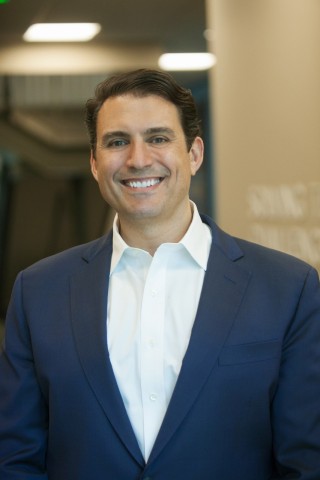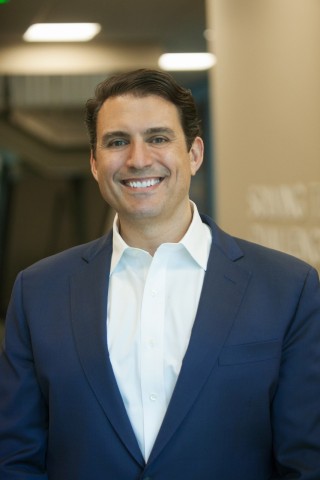HOUSTON--(BUSINESS WIRE)--Noninvasix announced today that David J. Giarracco has been appointed the new CEO of the company. A veteran medical device executive with relevant critical care market experience, Giarracco will advance the commercialization of the only non-invasive patient monitoring device designed for earlier detection of life-threatening sepsis so it can be treated to improve patient outcomes.
“Dave is the right leader at the right time for Noninvasix,” said Tom Luby, Ph.D., Director of Texas Medical Center Innovation Venture Fund. “He has a deep understanding of launching new platform technologies that make a critical difference in patient safety and clinical outcomes while reducing overall healthcare costs.”
Giarracco has extensive experience in the launch and global commercialization of novel patient-monitoring technologies in both hospital and home care settings. In leadership roles at Medtronic and Covidien, he successfully scaled organizations to exceed business plans by strategically developing markets, addressing commercial structure, and creating clinically focused, solution-selling organizations. Giarracco combines this expertise with start-up experience as chief operations officer at SeaStar Medical and as a lead investor and board member at early-stage healthcare technology companies.
“Dave will play an essential role in helping refine our strategy and drive product development activity to realize our mission of better detecting and monitoring sepsis,” said Dr. Donald Prough, Rebecca Terry White Distinguished Professor and Chairman of the Department of Anesthesia at the University of Texas Medical Branch. “As a Noninvasix founder and practicing anesthesiologist, I am excited about our future and the opportunity to make a significant impact on this major healthcare challenge.”
“Prevention and control strategies for sepsis infections are urgently needed,” said Giarracco. “We need new, non-invasive approaches for early diagnosis to reduce complications and save lives. Noninvasix technology promises to make a major difference in patient care, reduce healthcare costs and have wider applications beyond sepsis.”
Giarracco received his Bachelor of Science in Biomedical Engineering from The Johns Hopkins University and his Master of Arts in Biomedical Engineering from The Johns Hopkins School of Medicine. He brings more than 25 years of medical technology experience as an engineer, commercial leader, and early-stage investor in innovative, category-defining technologies.
About Noninvasix
Noninvasix will be the first company to non-invasively monitor the severity of sepsis and septic shock, enabling clinicians to diagnose and monitor the response to treatment of tissue hypoxia in real-time. Its patented optoacoustic platform technology is the first solution to non-invasively and continuously measure central venous saturation. Incorporating Noninvasix into the ICU workflow allows clinicians to more quickly and accurately diagnose their critically ill patients and tailor treatments to improve outcomes. Future developments, enhancements, and evidence will expand the use and clinical impact of the technology into other indications and settings.
About Texas Medical Center Venture Fund (TMCVF)
Noninvasix has been a part of the Texas Medical Center Venture Fund (TMCVF) portfolio since 2018. TMCVF is the venture capital arm of the Texas Medical Center, the largest medical center in the world with a mission to serve the health, education, and research needs of Texas and the world. TMCVF are early-stage investors who take a long-term view to support the commercialization, launch, and growth of innovations in medical devices and digital health solutions.
About Sepsis
Sepsis is a potentially life-threatening condition that occurs when the body's response to an infection damages its own tissues. When the infection-fighting processes turn on the body, they cause organs to function poorly and abnormally. Sepsis may progress to septic shock. This is a dramatic drop in blood pressure that can lead to severe organ problems and death. Early treatment with antibiotics and intravenous fluids improves chances for survival. In the U.S., 1.7 million adults are affected by sepsis annually, resulting in nearly 270,000 deaths.1 Hospital-acquired sepsis affects approximately 30% of intensive care patients globally,2 leading to longer hospital stays and mortality rates exceeding 40%.3 Measuring tissue hypoxia non-invasively may facilitate early diagnosis, enabling timely treatment and prevention of sepsis complications.
References:
- What is sepsis? Centers for Disease Control and Prevention, August 17, 2021. https://www.cdc.gov/sepsis/what-is-sepsis.html.
- Sakr Y, Jaschinski U, Wittebole X, Szakmany T, Lipman J, Namendys‐Silva SA, Martin‐Loeches I, Leone M, Lupu MN, Vincent JL (2018) Sepsis in intensive care unit patients: worldwide data from the intensive care over nations audit. Open Forum Infect Dis 5(12):ofy313. https://doi. org/10.1093/ofid/ofy313.
- Markwart R, et al, Epidemiology and burden of sepsis acquired in hospitals and intensive care units: a systematic review and meta-analysis Intensive Care Med (2020) 46:1536–1551.




